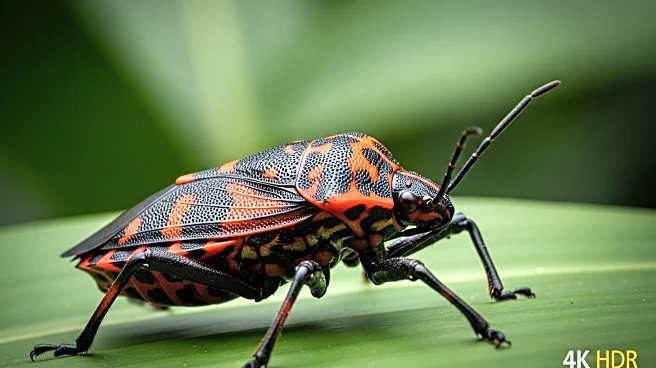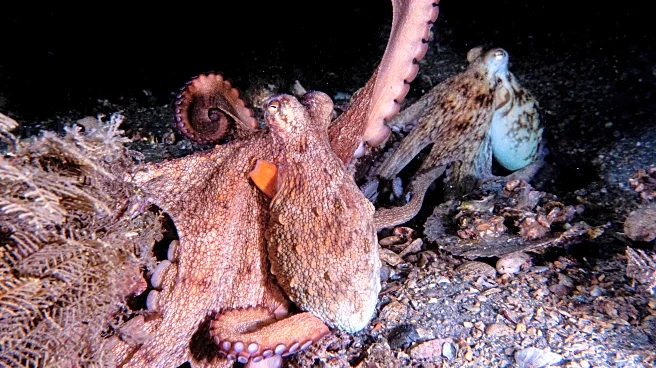What is the story about?
What's Happening?
Researchers at the Smithsonian Tropical Research Institute have discovered that the matador bug, Bitta alipes, uses its vivid red leg patches as a defense mechanism against predators. The study, conducted in Panama, involved observing the bugs' interactions with predatory praying mantids and harmless katydids. The matador bugs increased their leg-waving behavior significantly in the presence of mantids, which never attacked the waving bugs. This behavior suggests the display is a warning signal or a tactic to confuse predators. The study highlights a broader evolutionary pattern among related insect species.
Why It's Important?
The findings provide insight into the complex survival strategies of insects and their evolutionary adaptations. Understanding these behaviors can contribute to broader ecological knowledge and inform conservation efforts in diverse ecosystems. The study also emphasizes the importance of biodiversity and the intricate relationships between species in maintaining ecological balance. By uncovering these survival mechanisms, researchers can better appreciate the role of individual species in their habitats and the potential impacts of environmental changes on these dynamics.
Beyond the Headlines
The study raises questions about the evolutionary pressures that drive such defensive behaviors and how they may evolve in response to changing environmental conditions. The research also highlights the potential for similar adaptations in other species, offering a window into the evolutionary processes that shape biodiversity. The findings could inspire further studies on the ecological roles of insects and their interactions with predators, contributing to a deeper understanding of ecosystem complexity.
AI Generated Content
Do you find this article useful?















